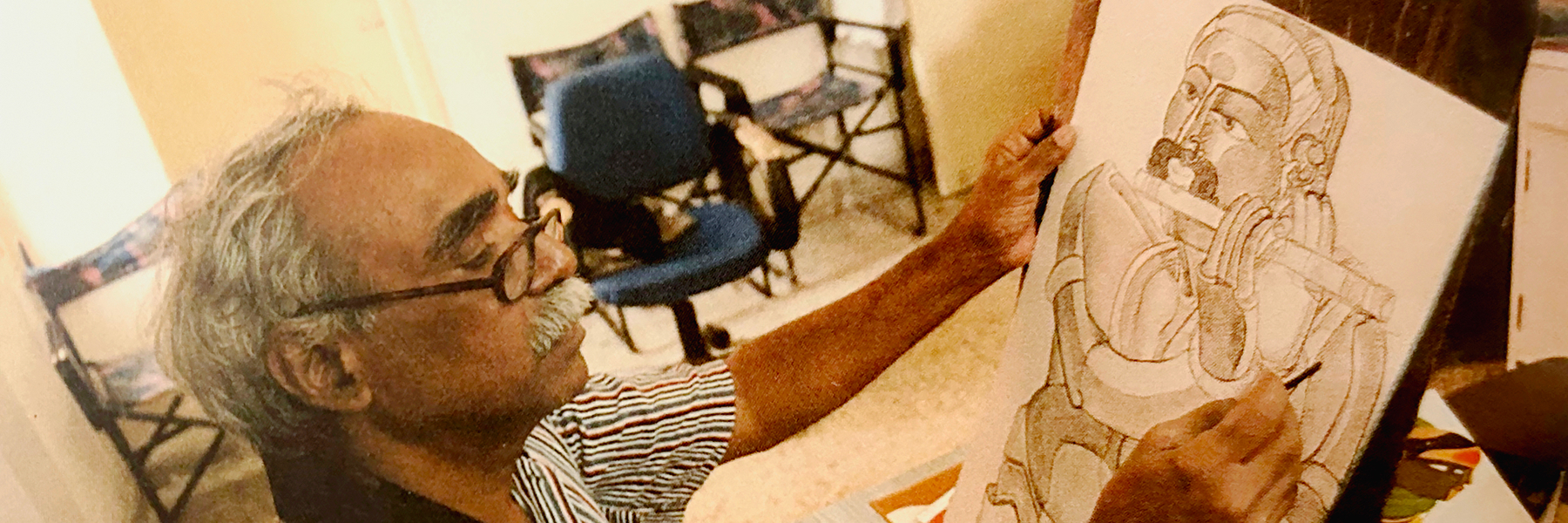
Behind the Canvas: 14 Unknown Facts About Artist Thota Vaikuntam
Artist Thota Vaikuntam is one of India’s contemporary masters, instantly recognizable for his vibrant portraits of Telangana women and men. Behind these bold lines and vibrant colors, there is also a fascinating personal journey shaped by perseverance and a profound connection to his roots.
In this blog, we uncover lesser-known facts about this legendary artist, from the people who inspired him to the cultural symbols in his paintings.
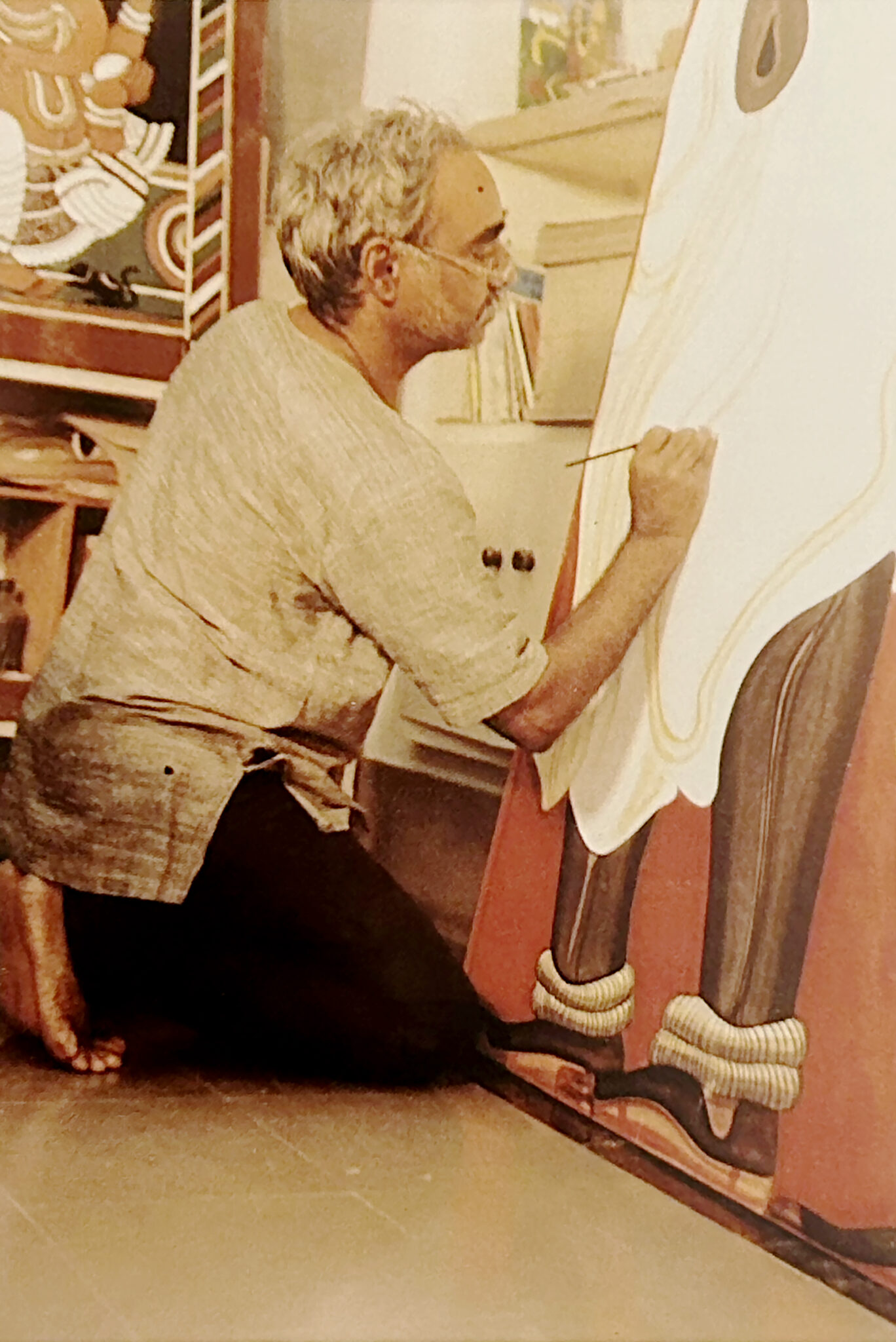
Where was Thota Vaikuntam born and raised?
Mr. Vaikuntam was born in Boorugupalli village in Telangana, where his family ran a small kirana shop selling everyday goods to villagers.
What were his first memories of art?
As a child, he was captivated by the folk performers who traveled through his village, acting out mythological stories of Bhima and Anjaney. Dazzled by the colorful costumes and the painted backdrops, he would go home and draw the scenes from memory.

What inspired Mr. Vaikuntam to become an artist?
He felt far more interested in arts than academics, and he considered pursuing music, acting or painting. In high school, a teacher encouraged him to make paintings based on mythology and Indian history, and so he settled on art. His family wanted him to join the Kirana shop, but his mother Sathyamma supported his decision to study art.
Where did he study art?
In 1960, Thota Vaikuntam entered the College of Fine Arts & Architecture, Hyderabad. His studies were interrupted for several years in the late 60s due to political unrest in Andhra Pradesh (decades before Telangana was granted statehood). In spite of these challenges, he received a Diploma in Painting in 1970. The following year, in 1971, he attended MS University Baroda for a graduate degree in Painting & Printmaking, on a scholarship from the Andhra Pradesh Lalit Kala Akademi.
Who were Thota Vaikuntam’s influential mentors or teachers?
At MS University Baroda, he studied under renowned artist K.G. Subramanyan, also known as Manida. Mr. Vaikuntam was deeply inspired by his paintings, and he credits Manida as a major influence on his life and work.

What challenges did he face in his early career?
Mr. Vaikuntam struggled financially during college and early on in his career. As a student, he relied on his classmates for food and art supplies, and he lived in the studio of his friend, Mohan Koda. He worked with cheap materials like charcoal, pen and ink, and he would even draw on the reverse sides of discarded paper from upperclassmen. After graduation, he took odd jobs while still pursuing art, including teaching at Bal Bhavan and art directing films by his friend B. Narsing Rao.
What is the style of his paintings?
Thota Vaikuntam is known for his portraits of Telangana women with dark skin and dressed in bright saris. Whether portrayed alone, among friends or as mother and child, his women exude a quiet confidence and power — an admiration that can be traced to his mother Sathyamma and his wife Suguna. He also paints groups of villagers, musicians and pandits that capture the rhythm of rural life. His style is noted for clean lines and bold, primary colors.
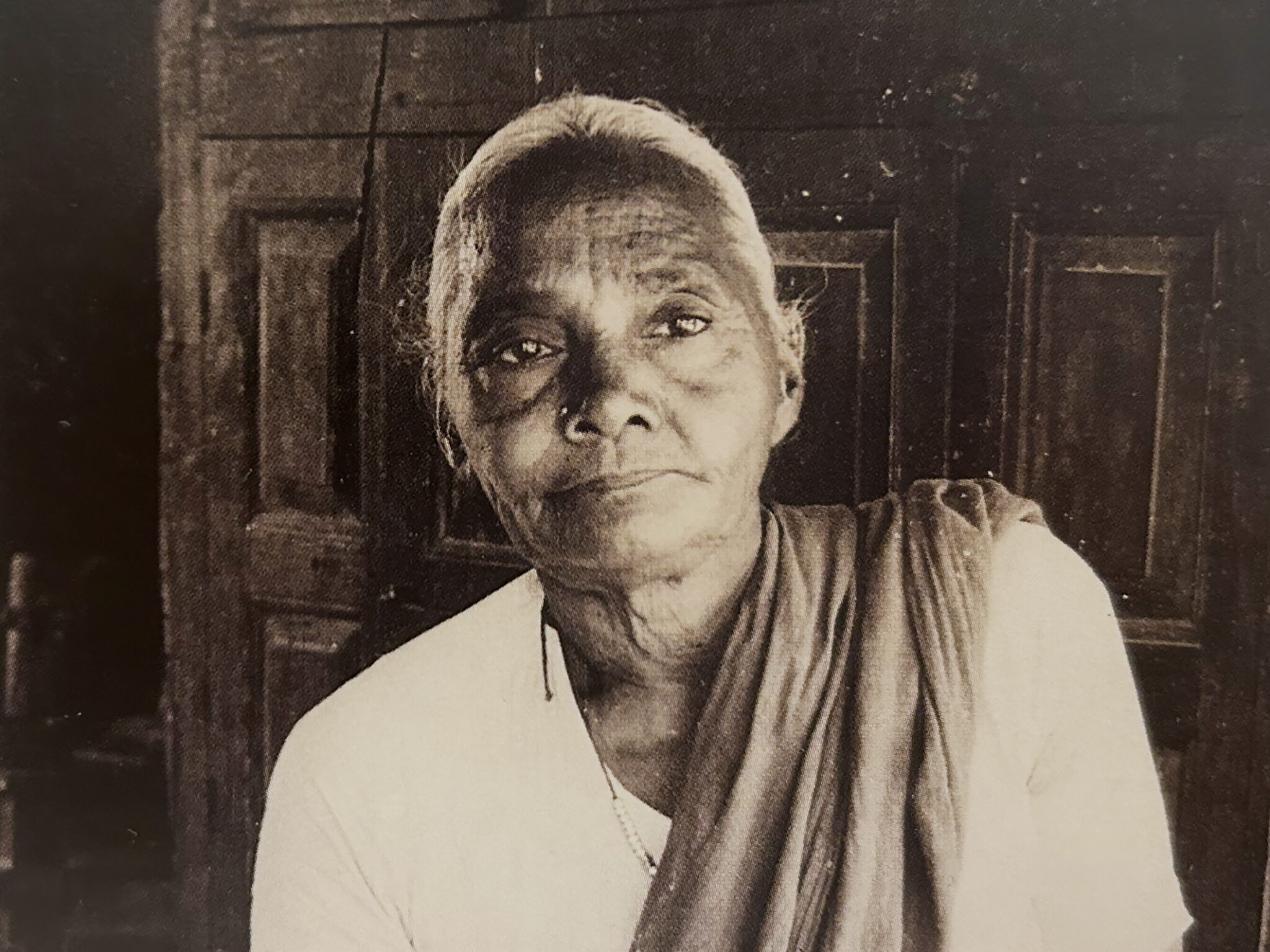
What are the themes in Thota Vaikuntam’s artwork?
His paintings express pride in his rural roots and his enduring love for the people of Telangana. He hopes to depict a world untouched by modernity, where regional traditions and values are celebrated, and he also intends to emphasize the importance of women in society. As he says, “All I know is what the village gave me — the music, the folk culture, song, dance and poetry.”
Why does he depict women with yellow paint on their foreheads and cheeks?
There is a custom in Telangana for women to apply turmeric paste to their foreheads and large dots on their cheeks. Mr. Vaikuntam intends to honor women’s importance in upholding culture, so he carefully renders their traditional clothing, jewelry and cosmetics.
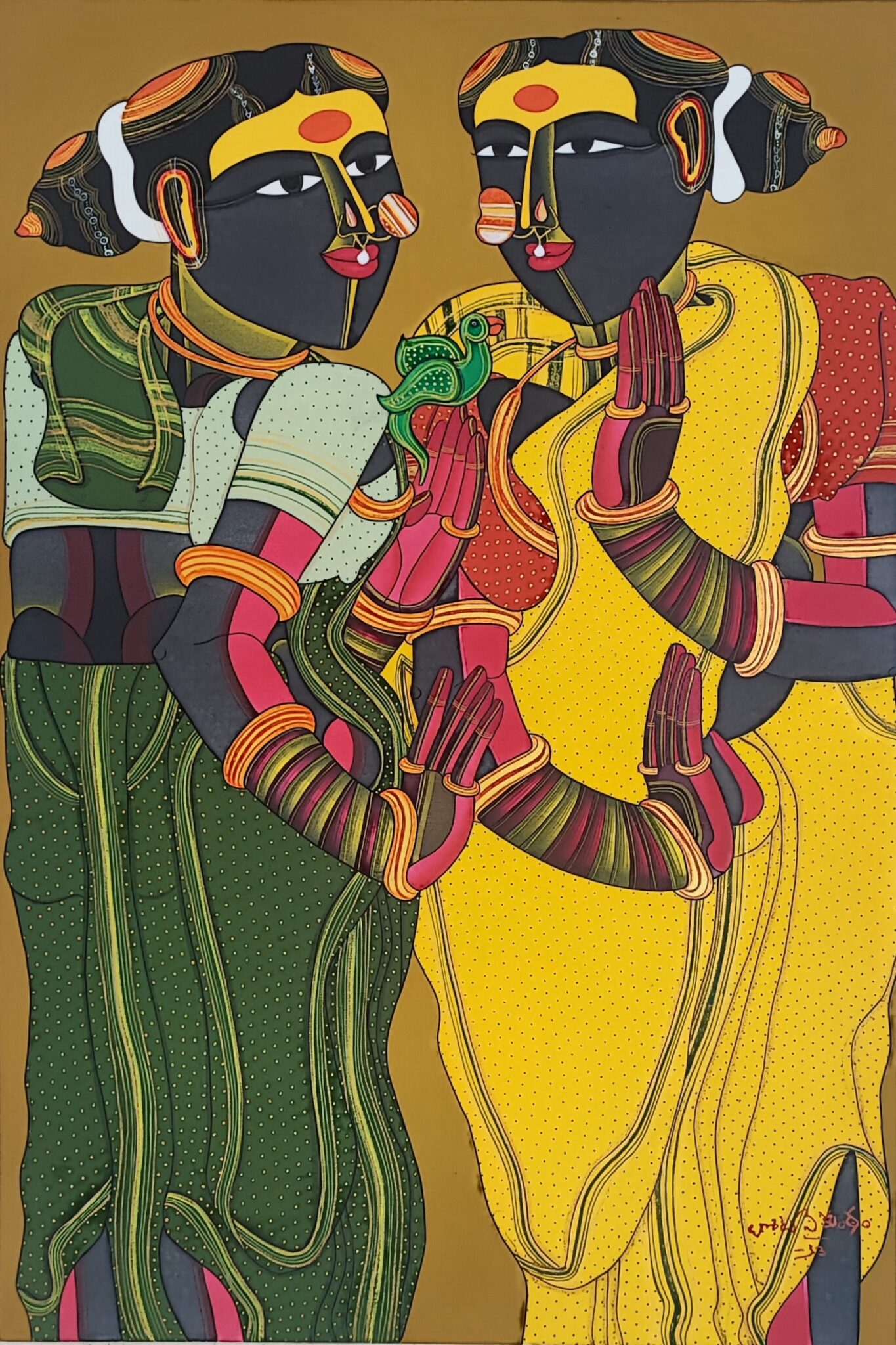
What makes his Telangana women unique?
Thota Vaikuntam’s women have a distinct Telangana appearance as they wear vibrant saris in the kashta style, and they are adorned with nose-rings, ear and hair ornaments, bangles and elaborate makeup. They hold their heads up proudly, and the artist celebrates them exactly as they are.
What mediums has Thota Vaikuntam worked in?
Although he frequently paints in oil and acrylic, the artist has also made bronze sculptures and drawings in charcoal. Earlier in his career and as his student, he had to work with cheaper mediums like pencil, pen and ink, so he became highly skilled in line drawing and shading.
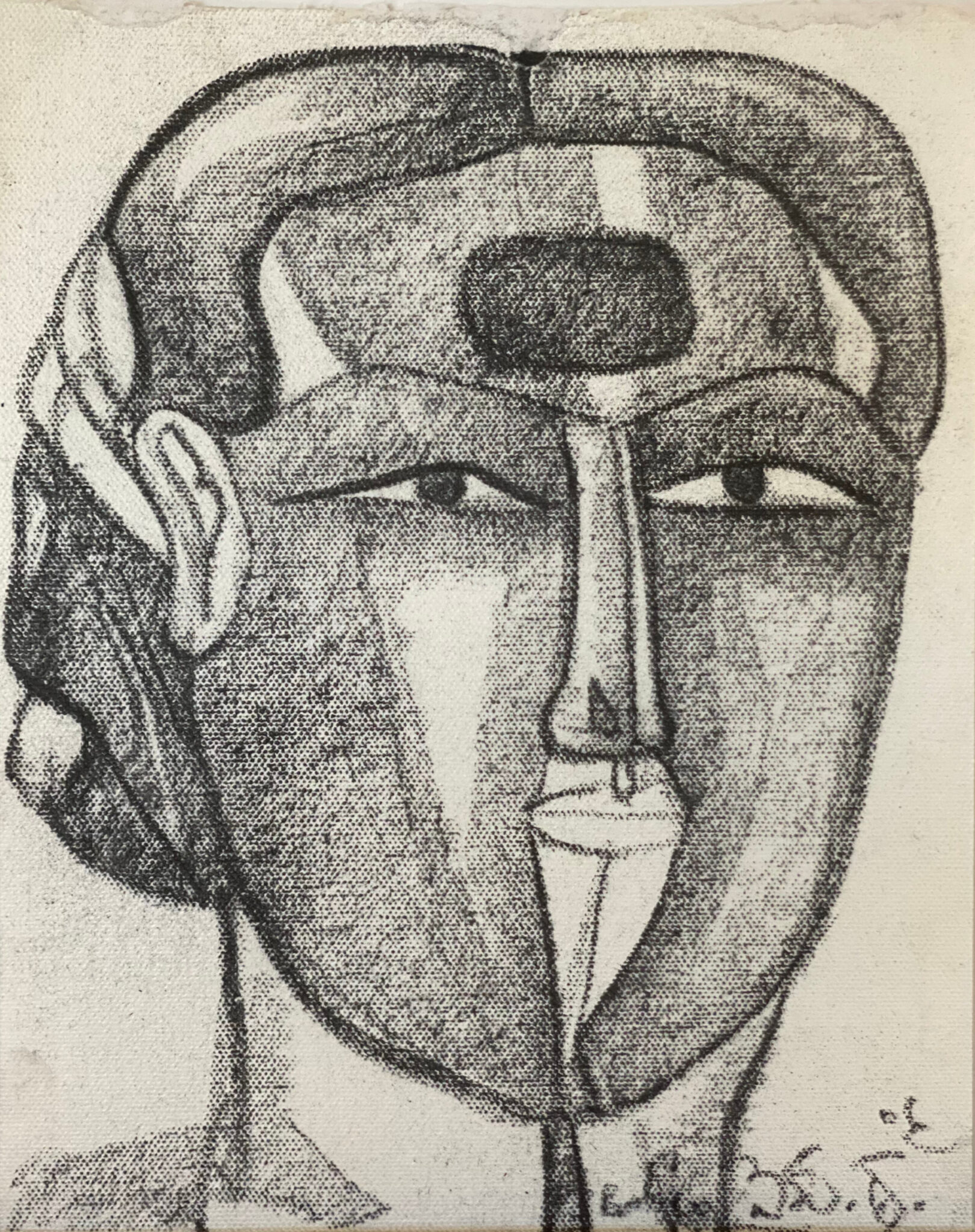
What is his daily routine like?
Each morning, Mr. Vaikuntam rises with the sun at dawn. He begins his day by practicing yoga, before drawing and painting for several hours. He takes several breaks throughout the afternoon — performing puja, taking lunch and resting — but he always returns to the studio. In the evening, he eats dinner with his close-knit family, and he may visit with friends or attend an art-related event. He ends the day working in his studio again, before bed.
Has Thota Vaikuntam received any national honors or state awards for his art?
He has won many awards throughout his career, including the prestigious National Award for Painting in 1993. He has also received honors from the Bharat Bhavan Biennale, Hyderabad Art Society, the Academy of Fine Arts in Kolkata and the Andhra Pradesh Lalit Kala Akademi.
Which galleries and museums have exhibited Thota Vaikuntam’s paintings?
Mr. Vaikuntam has exhibited widely around the globe, with solo exhibitions in Delhi, Mumbai, London, New York and other major cities. His work is also held in the collections of museums including the National Gallery of Modern Art in Delhi, Lalit Kala Akademi in New Delhi, Peabody Essex Museum in Massachusetts, Salar Jung Museum in Hyderabad, and Glenbarra Art Museum in Japan.
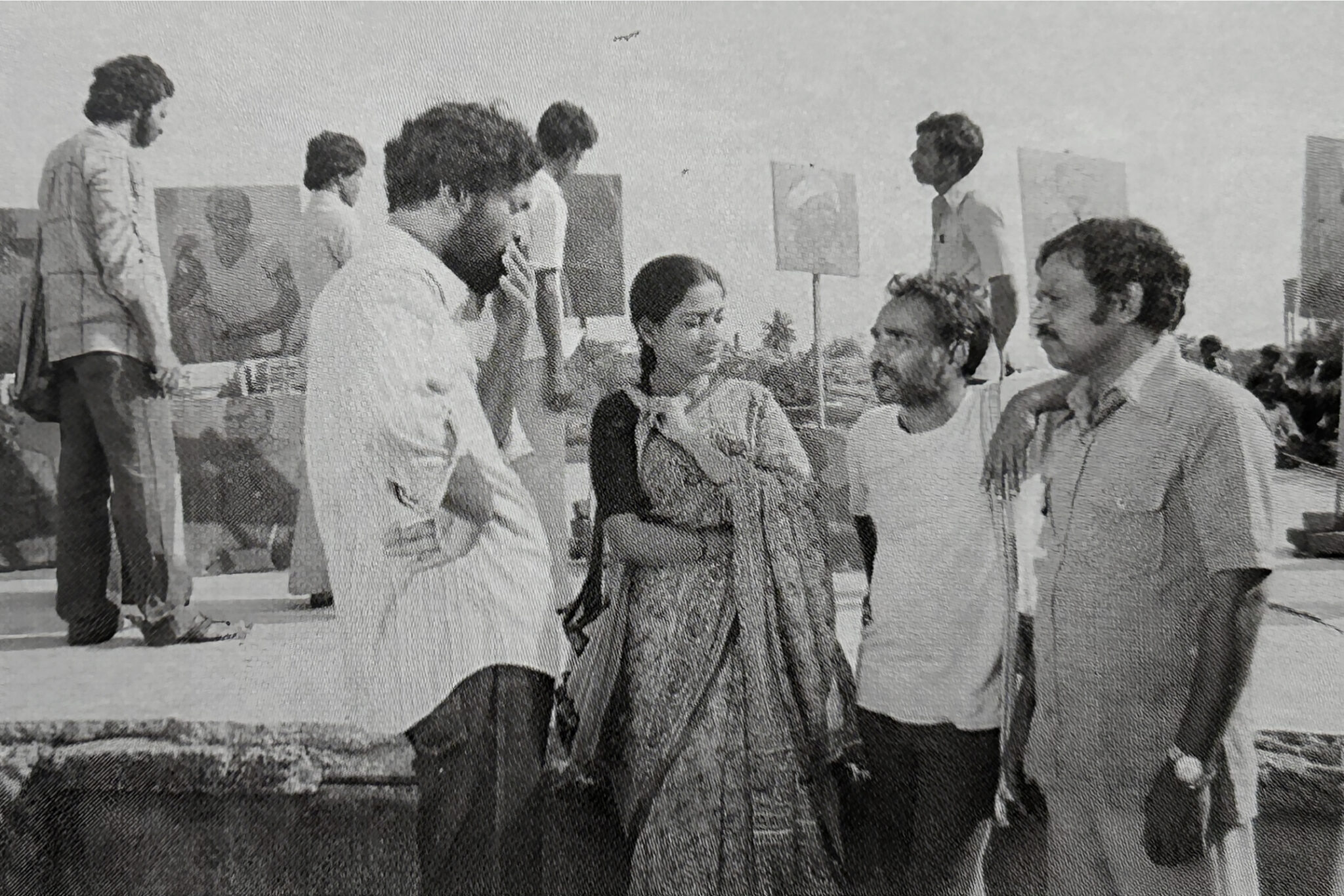
Mr. Vaikuntam’s journey as an artist is an inspiring one, and there is no shortage of interesting facts about his paintings and his path to success! To read more about the artist, please visit https://laasyaart.com/thota-vaikuntam. To inquire about original paintings by Thota Vaikuntam, please reach out at info@laasyaart.com or +1 650-770-9088.
— Sonia Patwardhan

Leave a Reply
You must be logged in to post a comment.